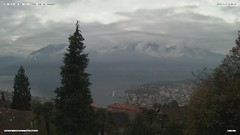Today's Dslr photo tip, the photo histogram explained... Involves using the (gulp) histogram! This is other of those features found on most of the higher end cameras - which you probably aren't using. And should!

First - the photo histogram explained. What is it?
Photo
The photo histogram is that graph that looks like a mountain range with spikes shooting up at seemingly random places. The scary thing is that when you see it, it looks beyond doubt technical. Most of us immediately try for the land speed narrative in turning it off!
It beyond doubt isn't that hard or confusing. Plus, it can go a long way to getting us best exposure on our images!
All the histogram does is graphically display the tonal ranges in your photo from the darkest black areas to the lightest white areas.
The left side is for black, the right side is for white.
Why should we use it? Why not just look at our Lcd display and make adjustments from there?
Glad you asked...
I've written other articles (discussing picture controls) where I've said that the Lcd display is not accurate. What you are finding on the Lcd screen is not necessarily what is going to show up on your computer. It is beyond doubt easy to do a whole series of photos and get home only to study that your masterpiece is under or over exposed and not at all what you were expecting.
Sometimes it can be fixed (after hours and hours in Photoshop) sometimes it can't. If the shadow or feature details weren't captured - they just aren't there to be "fixed".
Rule of thumb... Use your Lcd display to check for composition. Use your histogram to check for exposure.
The preliminary step to understanding how to use a histogram is to drag out your camera's by hand and shape out how to turn it on in playback mode so that you can see both the histogram and the picture.
Reading your by hand could beyond doubt be the most involved part of the operation. This is other of those times when reading the by hand (ten minutes of sheer boredom) can dramatically enhance your photography - forever.
Once you've learned how to turn on your histogram, take a few shots of something. For this test run, find a field that is mostly neutral in tone and not mostly dark or light.
Now that you have a "neutral" shot, take your first test shot. Make your first test photo under exposed.
Check out the histogram. See how the spikes are more to the left hand side of the screen? That's the side that shows the dark areas of a photo and since this one is under exposed, it is darker than normal.
Now do a photo of the same field but greatly over expose it.
See how the histogram spikes have shifted to the right side? That is the side dealing with the light areas in your photo.
Now look at your customary "correctly exposed" photo. The spikes are likely to be more in the middle area.
Spikes at either end of the spectrum tend to indicate a photo that is over or under exposed and you will want to make adjustments - but not always.
Caution... The temptation at this point is to automatically set every photo so that the histogram spikes are in the middle. This would Not be correct. Each photo has its own right or wrong settings - considered by the field matter and your artistic vision.
If you are doing a photo showing a lot of snow... A histogram heavily skewed to the right is correct.
A scene of a coal bin would correctly yield one heavily skewed to the left.
A sunset silhouette will give you one with spikes on both the left And right, with a huge dip in the center.
A scene with a lot of neutral tones will give us one that looks like a bell curve in the center.
Experiment with this for a few minutes and you will speedily understand how it works.
Then when you are shooting, you will promptly see where your photos can be improved and make the adjustments to your settings before it is too late. Remember, in Photoshop you Can adjust the lightness and darkness of a photo, but you can't add detail that was never captured!
Today's challenge is to take this Dslr photo tip - the photo histogram explained, and to institution with and learn how to use your camera's histogram. It will make a good weekend scheme for you and if you want to start winning photo contests, it is worth the attempt to get comfortable with using histograms.
Dslr Photo Tip - The Photo Histogram Explained!
0 ความคิดเห็น:
แสดงความคิดเห็น